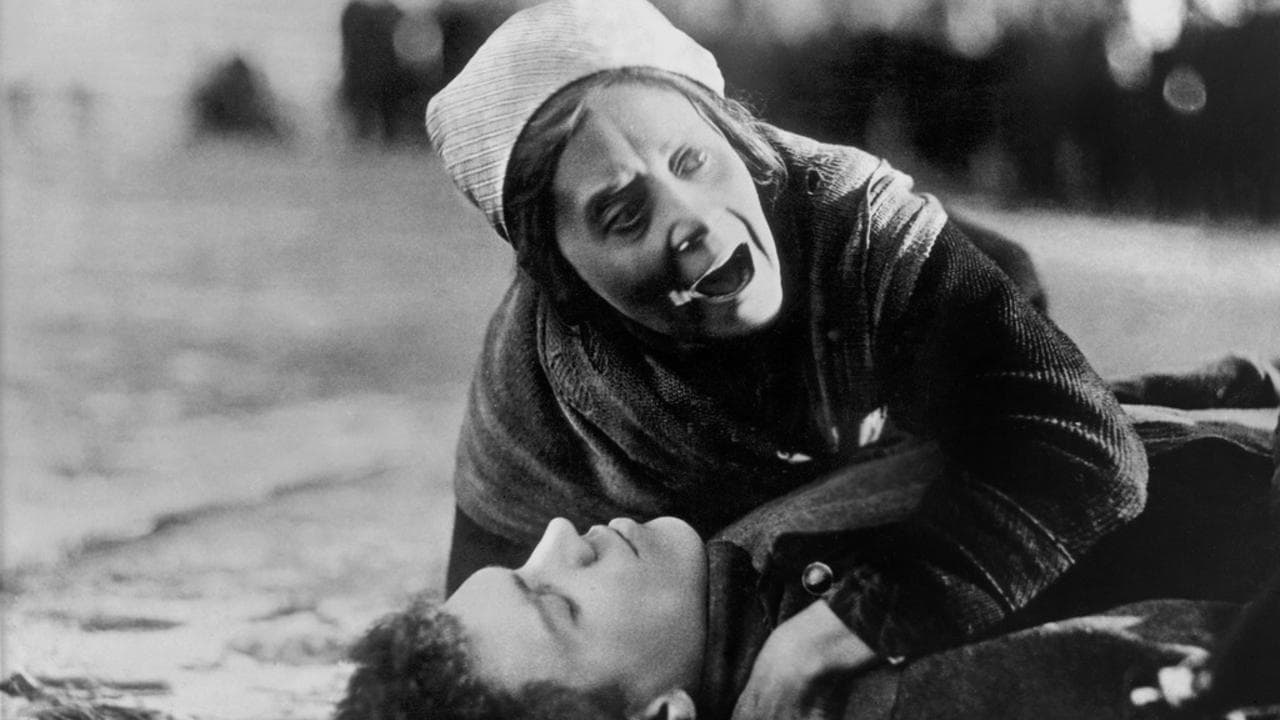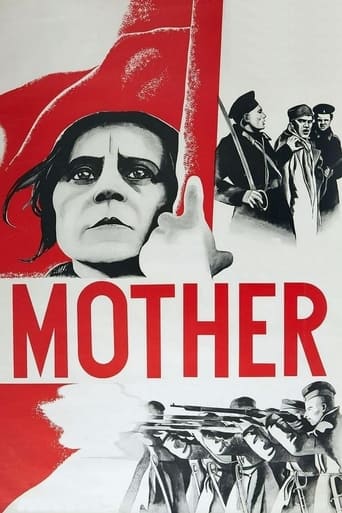

Story: It's very simple but honestly that is fine.
... View MoreExactly the movie you think it is, but not the movie you want it to be.
... View MoreThrough painfully honest and emotional moments, the movie becomes irresistibly relatable
... View MoreIt is interesting even when nothing much happens, which is for most of its 3-hour running time. Read full review
... View MoreМаксим Горький (Maxim Gorky), the novel author, has a direct link with the origin of cinema, as he was one of the first to write about it; on the 22th of June in 1896 Gorky witnessed one of the earliest film productions of the Lumière brothers, an experience that would be the basis for 'in the realm of shadows'.Gorky was impressed by film's potential to be an universal language, the ability which Мать (Mother) illustrates by adapting his written work to the screen so even the illiterate Russian people could understand his story.Всеволод Пудовкин (Vsevolod Pudovkin)'s style is more akin to the social realism (although this is influenced by the fact that the novel can be categorised as social realism) that Stalin would prefer, in contrast to the more abstract and jarring montage of Сергей Эйзенштейн (Sergei Eisenstein). A particular form of montage that he used in this film is worth mentioning, namely the fragmentation of action. Pudovkin 'cuts' the action into several different shots that only show a part or fragment of the action, when assembled in a montage the viewer's mind fills in the blanks (cf. Gestalt psychology) to create the illusion of a complete action. The most known example of this technique in Film is probably the shower scene from Psycho. This in itself proves the impact the Russian film school has had on film practices in general.To conclude, Мать (Mother) is historically important and on some parts technologically innovative. However, if it seen on itself and in comparison to other works of the time, for me it does not hold up as well as most film theorists and critics would have you believe.
... View MoreFive movies were made based on Gorky's novel: in 1920 by Aleksandr Razumnyi, in 1926 by Vsevolod Pudovkin, in 1941 by Leonid Lukov, in 1956 by Mark Donskoy (starring Aleksey Batalov as Pavel Vlassov), and in 1990 by Gleb Panfilov. Also Bertolt Brecht put the novel on stage in 1932. Hanns Eisler created, based on the novel, a cantata for chorus, solo voices and two pianos in 1935.From all this list, undoubtedly impressive by number and persons implied, I was able to watch only the silent made in 1926 by Vsevolod Pudovkin. Politics aside, it is a masterpiece. He was one of the greatest Soviet filmmakers of the 1920's avant-garde (in the same line with Kuleshov, Eisenstein, and all the others), and this movie proves it brilliantly.Pudovkin's movie has an architecture that is radically different from that of the novel. One is talking about very recent events, the other is framing the facts and personages into a paradigm. Both are strongly motivated politically, but the two political moments are very different: the novel is made in the aftermath of the 1905 Revolution, it's real time life, while the movie comes in the first years of Soviet power, preoccupied to build the official history of the revolution, in other words the founding mythology. While Gorky tells us a story of life flowing naturally, with personages of flesh and bones, Pudovkin demonstrates a paradigm, deals with a myth in the making. And in any myth the facts and personages are no more just facts and personages like anything else from real life: they are prototypes aiming to convey a sense. I'll give you only one example: the bridge over the river separating factory and the neighborhood. At Gorky it's just a bridge, nothing else. At Pudovkin it is a path you take to leave your submissive life and enter the revolutionary struggle. So it becomes a prototype within a paradigm, conveying a metaphysical significance.Gorky's novel inaugurates the Socialist Realism: it means its approach is realist to the bone, so its style is traditional (following the traditional Realism of the 19th century, that were to be observed by all Socialist Realist artists). Does also the movie belong to the Socialist Realist style? I don't think so. I would say that by the contrary it belongs hundred percent to the avant-garde of the twenties, so it rejects totally the tradition. It is a Constructivist oeuvre, calling in mind maybe the Expressionist movies made in Germany in the same epoch. These artists of the twenties, totally committed politically, while thinking to build the new society based on their radically new form of art and throwing over the board all that was old, traditional, classic, Realism included. The thirties would stop them forcefully, they would have to obey to the party dogmas or go to hell (the first circle or beyond).A few words about the cast: Vera Baranovskaya made a remarkable performance in the role of the mother; she would play one year later in the following movie made by Pudovkin, The End of St. Petersburg; Nikolai Batalov (1899-1937), who played in the role of the son, was also Soldier Gusev in Aelita (a fine role in a fine movie); it seems that he was not related to Aleksey Batalov, who played Pavel Vlassov in the movie of Mark Donskoy from 1956; and last but not least, Pudovkin himself in the role of a police officer- the guy really enjoyed the negative roles
... View MorePudovkin's Mother is a strong film that refused to be bound by the limitations of its time and should remain interesting to contemporary audiences. The plot of the film is simply outstanding. While some would say it was to be expected since the film is based off of a novel by Maxim Gorky, it should be noted that good source material does not guarantee cinematic success. The film follows a mother and her revolutionist son, Pavel, as they navigate a series of difficulties resulting from her son's allegiance.With no speech, a major challenge for silent films is the creation of multidimensional characters. Pudovkin overcomes this challenge by being able to capture the emotions of the characters. I thought the mother, was exceptionally interesting. Her struggle did not only represent that of a loving mother, but also that of a movement. Pudovkin make great use of the camera, whether it was a side profile emphasizing the pensiveness of the character or a well-timed frontal close-up, he facilitates our ride on this emotional roller-coaster.For the most part, I really enjoyed the pacing of the film. While the pacing did vary in tempo, it was always well within its own "groove." Even in the extremely exciting conclusion, one did not get to feel the extremely fast-paced tempo of a Battleship Potemkin, which I believe speaks to the differences between the directors. On that note, it was interesting to see how Pudovkin's use of montage differed. His cuts were far more gradual and subtle when compared to Eisenstein's in Battleship which contributed to the stability of the film.All in all, Mother was a good watch and one of the stronger films that we have seen.
... View MoreSet in Russia during the harsh winter of 1905. A mother finds herself caught in emotional conflict between her husband and son when they find themselves on opposite sides of a worker's strike. The son is a supporter of the workers but the father has been blackmailed into supporting the bosses and blacklegs. Despite the grief which follows the mother gradually comes to support the strikers and eventually is prepared to risk everything in standing up to police and Cossak troops in a demonstration endangering both herself and her precious son.
... View More